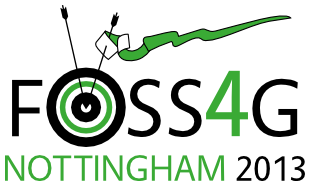Presentation
A Cellular Automata Land-Use Model For The R Software Environment
Richard Hewitt (University of Alcalá, Madrid, Spain) with Borja Moya-Gómez (Madrid Complutense University), Jaime Diaz-Pacheco (Madrid Complutense University)
09:30 on Friday 20th September (in Session 26, starting at 9 a.m., Sir Clive Granger Building: A41)
Show in Timetable
The application of geographic Cellular Automata (CA) based techniques for land use modelling can be traced back to the theoretical formulations of the American geographer Tobler (1979), later implemented in practice by White and Englelen (1993) and Batty and Xie (1994). Since then, CA applications have developed very rapidly and CA-based software environments such as Metronamica and SLEUTH are now widely employed in many countries across several continents as scientific and policy tools for exploring land use dynamics and future land use change. The term CA is sometimes applied in a broad sense to any cell-based land use model in which algorithmic operations are used iteratively to determine future land use states on the basis of parameters such as distance from transport networks (accessibility), biophysical aptitude of land areas to take on new states (suitability), or exclusion zones such as natural protected areas or land set aside for future development (zoning). However, in a a CA land use model sensu stricto, key land use change dynamics are represented by neighbourhood transition functions, in which the value (land use class) of a given cell in each model iteration is determined by the value of adjacent cells according to user-defined attraction or repulsion parameters, with accessibility, suitability and zoning being applied to support new land use allocation. Determinism is avoided and realistic human behaviour is imitated by applying stochastic perturbations to the model derived from probability distributions. Simple initial cell states transformed in this way through many model runs can give rise to patterns of great complexity, chaotic structure and, eventually, randomness. This key distinction, that is, autonomy and capacity to self-organize, is what gives true CA models their power to replicate artificial processes such as urban development with a high degree of success. Though there are a number of Free and Open Source Software (FOSS) applications presently available for other types of land use models, such as Huang's Change Analysis (logistic regression), and Purdue University's Land Transformation Modeller (LTM) (Artificial Neural Networks), there are few fully operational implementations of true CA models for land use modelling in the Open Source community. In addition, stand alone model frameworks do not usually incorporate appropriate statistical goodness-of-fit comparison techniques for model evaluation, something that is normally carried out externally in statistical software packages. In this paper, we discuss in detail our recent work to address these limitations by developing and testing a CA land use model for the R software environment. The R platform, with its extensive developer and user community, and its clear relevance for model building and scientific computing, seems to present an ideal environment for geographical land use modelling. The advantages offered by R as a development environment for a CA land use model are evaluated, and the pros and cons of the approach employed are discussed in depth with reference to commercial alternatives.
